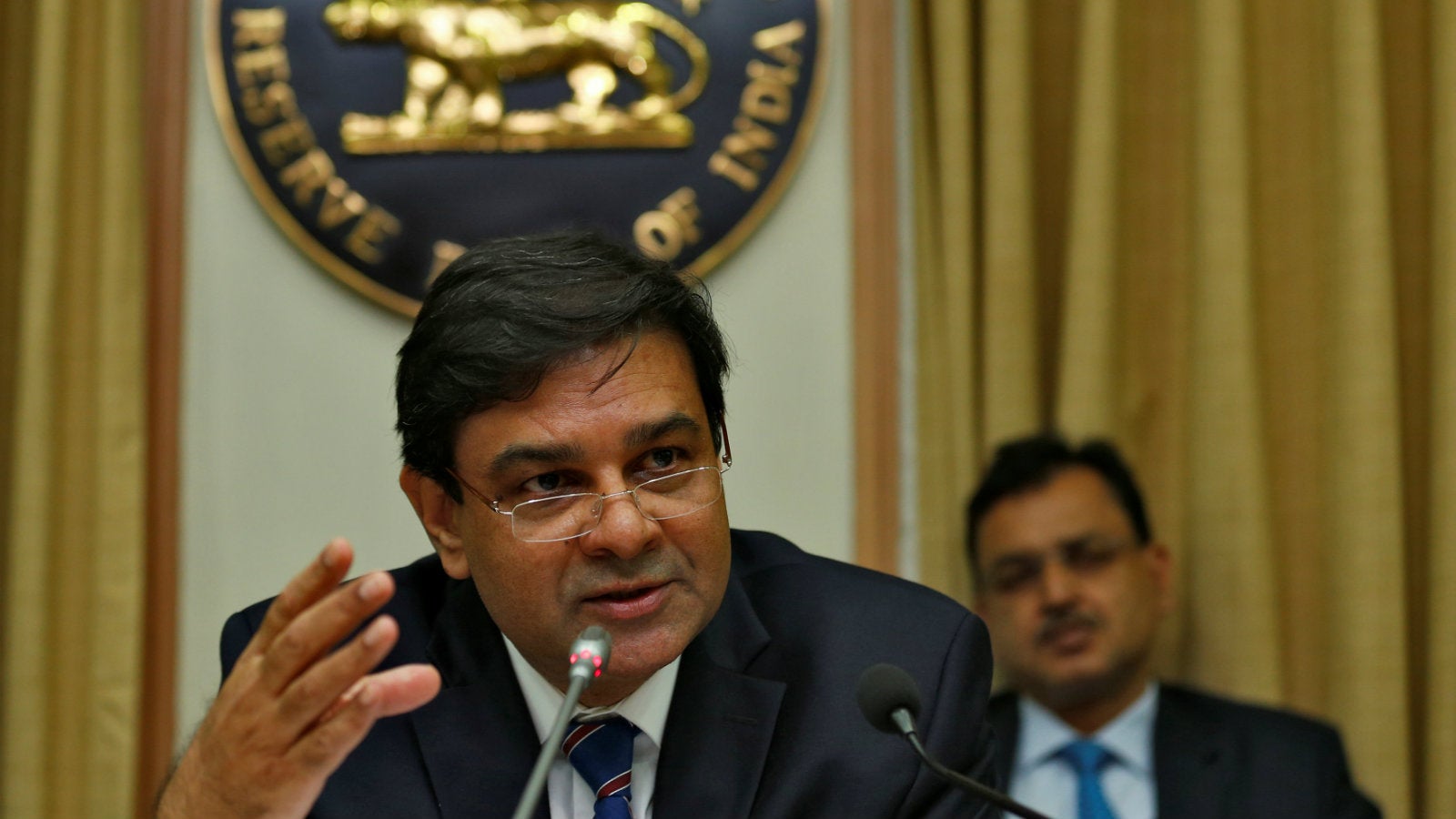The RBI got grilled on demonetisation. Here’s what Urjit Patel & Co had to say
On Dec. 07, India’s central bank surprised the country with its decision to hold interest rates. It was widely anticipated that the Reserve Bank of India (RBI) would resort to a rate cut, given the liquidity crisis in the country due to prime minister Narendra Modi’s demonetisation policy.


On Dec. 07, India’s central bank surprised the country with its decision to hold interest rates. It was widely anticipated that the Reserve Bank of India (RBI) would resort to a rate cut, given the liquidity crisis in the country due to prime minister Narendra Modi’s demonetisation policy.
The central bank said it needs more time to assess the impact of the cash squeeze on the economy.
It said that the withdrawal of currency has made the outlook for the current fiscal “uncertain.” In the short-term, economic activity in sectors such as retail, hotels, transportation as well as businesses in the unorganised sector could slow down as these are mostly cash intensive, the RBI added in a press release.
After the policy was announced, RBI governor Urjit Patel and his deputies spoke to the media. Most of the questions for the governor were on demonetisation. But unlike his predecessor Raghuram Rajan, who was very vocal about policy issues, Patel seemed reticent and many of the questions were answered by deputy governors, including R Gandhi and Michael Patra.
Here are the RBI’s answers to the questions that were asked.
Q: How serious is the deficit in the supply of new currency notes?
Gandhi: Large quantities of notes in various denominations have already been supplied to the public and they are being continuously supplied. We appeal to the public that they need not worry about availability. If they freely circulate money then no problem will arise. We are assuring the public that continuous supply will be coming along.
Q: In your statement you talk about the fact that the impact on the economy will be transient and you go on to say that a fuller analysis is awaited. Did the central board of the RBI recommend this to the government in its judgement?
Patel: Motivations for the decision were to deal with the problem of high quality counterfeit notes and unearth black money that may be held in cash. The decision has not been taken in haste but after detailed deliberations. The central bank and the government were conscious of certain immediate difficulties for the public at large and all efforts were made to mitigate them.
Q: How many notes have been returned till now?
Gandhi: The old notes that have come back are worth, as of now, Rs11.55 lakh crore.
Q: There is this speculation about a special dividend to be paid by the RBI. Is the RBI going to humour the government if the demand comes in?
Patel: The withdrawal of legal tender characteristic status does not extinguish any of the RBI balance sheets. Therefore there is no implication on the balance sheet as of now. So that question does not arise as of now. They are still the liability of the RBI.
Q: How much will demonetisation impact the GDP?
Patra: GVA (gross value added) estimates are down 50 basis points. We regard that (demonetisation) as a very transitory phenomenon. Monetary policy should not be reacting to a very transitory phenomenon.
Q: Is there any cost-benefit analysis of the entire process of the demonetisation? What happens if the entire demonetised currency notes comes back to the banking system?
Patel: The cost we are witnessing now, that’s in terms of inconvenience which we are all aware of. The benefits are in the medium term and the long term. The security of our notes is enhanced so they will be more difficult to forge. Secondly, we will have more transparency. We will be at a better place in terms of fiscal and tax compliance. Public finances could improve. And a very important collateral benefit is the thrust on digitisation that is taking place. The RBI, banks and the government are working very closely and that will ultimately also benefit the cost of printing money.